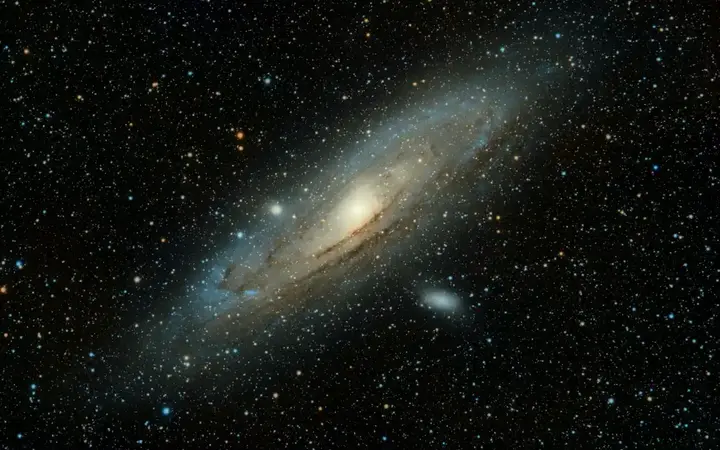The most fascinating discoveries we have made to explore Jupiter
Jupiter, the gas giant that is the largest planet in our solar system, has long been a source of wonder and excitement. Its enormous size and mass have significant implications for the rest of the solar system, and its existence has been known since ancient times. However, it was only with the advent of modern space exploration that we began to uncover the true marvels of this distant world. Here are some amazing discoveries we made while exploring Jupiter.
Show key points
- Jupiter, the largest planet in our solar system, has a massive gravitational influence that shapes the structure and evolution of nearby celestial bodies.
- Galileo’s discovery of Jupiter's four largest moons marked a turning point in astronomy and provided strong evidence for the heliocentric model.
- The planet's iconic Great Red Spot is a centuries-old storm that highlights Jupiter’s extreme weather patterns driven by rapid rotation and high wind speeds.
- ADVERTISEMENT
- Recent missions like Juno have allowed scientists to peer beneath Jupiter's dense atmosphere, uncovering its unique cloud layers and internal structure.
- Jupiter’s core is believed to be a hot, dense mix of elements in a fluid state, challenging traditional theories of gas giant formation.
- The Galilean moons each possess distinct and fascinating characteristics, from Io's volcanism to Europa's potential subsurface ocean.
- Ongoing and future missions such as Juno, Europa Clipper, and ESA's JUICE aim to explore Jupiter and its moons further, with hopes of discovering signs of life.
The heritage of Galileo and the moons of Galileo
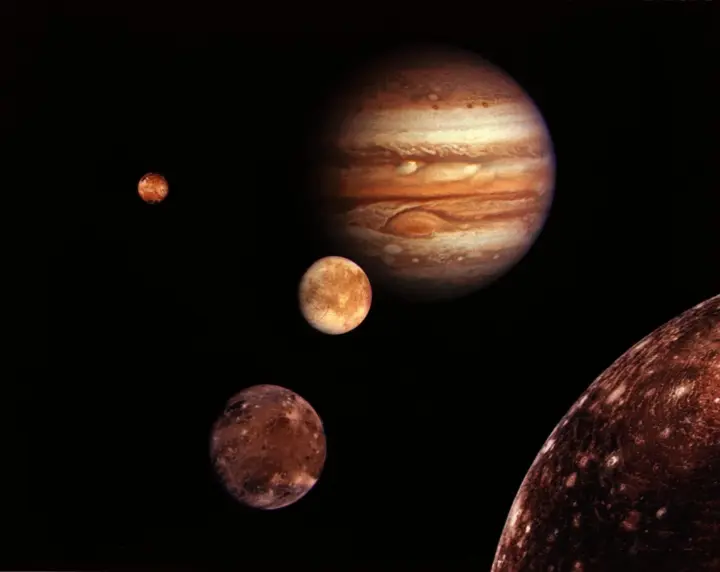
Galileo's discovery of Jupiter's moons was a tremendous event in astronomy. Using his homemade telescope, he observed four dots of light whose positions changed over several nights. These were not stars, as initially thought, but moons orbiting Jupiter. This observation provided substantial evidence of the heliocentric model of the solar system, and marked the beginning of modern astronomy. The moons – Io, Europa, Ganymede and Callisto – are now known as Galileo's moons and have been the subject of extensive study ever since. Each moon has unique characteristics: Io's intense volcanic activity, the ocean beneath the surface of Europe with the possibility of life, the magnetic field of Janeimede, and the ancient crater surface of Callisto.
Recommend
The harsh weather of Jupiter and the Great Red Spot
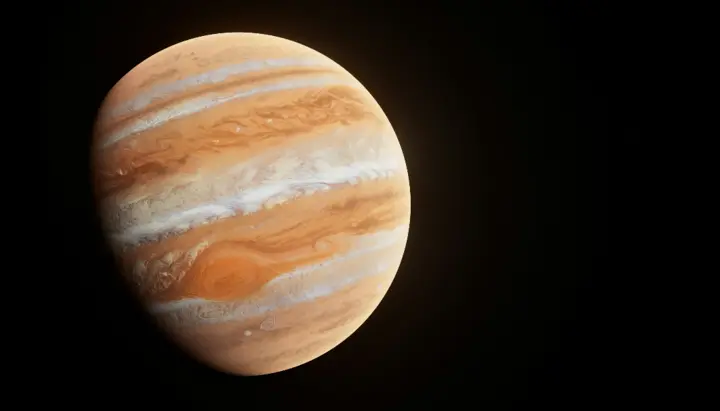
Jupiter's atmosphere is a dynamic and turbulent place, and the Great Red Spot is one of its most prominent features. This hurricane storm has been observed for at least 359 years and has probably been around longer. The continuity and magnitude of the storm – large enough to contain two or three planets from Earth – is still not fully understood. Jupiter's rapid rotation contributes to its zonal appearance and harsh weather, with wind speeds reaching 432 km/h (268 mph). The Juno spacecraft provided unprecedented close-ups of these atmospheric features, enhancing our understanding of Jupiter's meteorology.
Diverse landscapes of Jovian
The landscape of Jupiter is distinguished by its colorful clouds and powerful storms. The planet's strong magnetic field and high levels of radiation create a hostile environment, yet Juno was able to sounding under clouds, revealing insights into Jupiter's internal structure. The planet's atmosphere is made up of hydrogen and helium, with traces of other elements such as methane, ammonia and water vapor. The cloud layers include ammonia, ammonium hydrosulfide, and water ice, contributing to the distinctive appearance of the planet.
A strange and mysterious essence
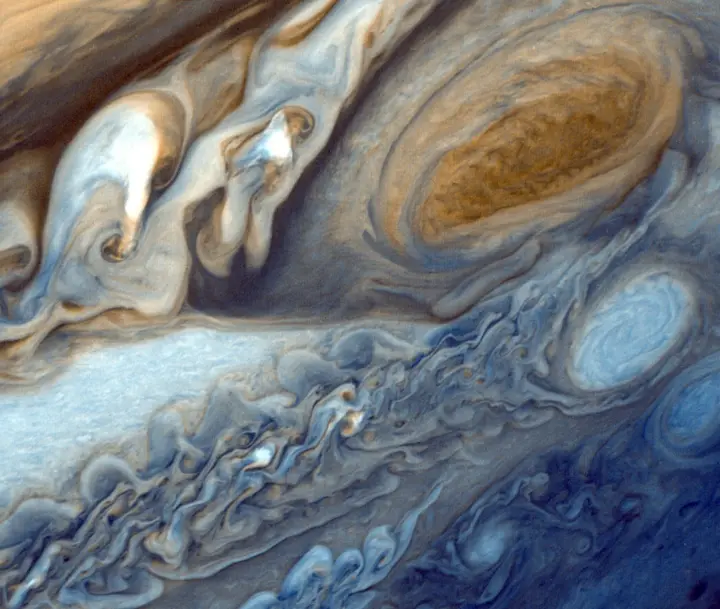
Juno's findings suggest that Jupiter's nucleus is not solid, but rather a hot, dense mixture of elements in a liquid state. The "ambiguity" of the nucleus is due to the enormous pressure and temperature at the center of the planet, which challenges our understanding of the formation of giant gas 8. The core temperature is estimated at around 43,000 °F (24,000 °C), with pressures reaching 50-100 million atm.
The Three Types of Jovian Clouds
Galileo, which landed in Jupiter's atmosphere in 1995, discovered that Jupiter has three types of clouds: those made up of ammonia, ammonium hydrosulfide, and water ice. This means that different types of rain fall across the sky of Jupiter, depending on the altitude. These findings have implications for our understanding of the planet's weather systems and the possibility of life in its upper atmosphere.
The role of Jupiter in the history of the solar system
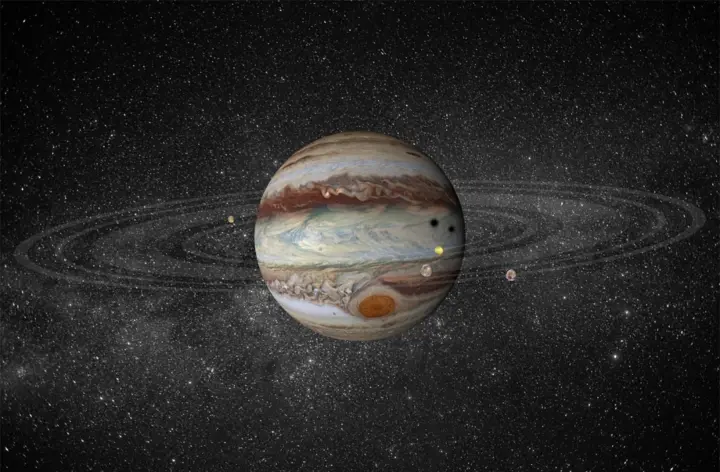
The influence of Jupiter on the solar system is deep and multifaceted. Early in the history of the solar system, Jupiter underwent a dramatic migration that shaped the fate of other celestial bodies. This migration, known as the "Great Path," saw Jupiter move inward toward the sun, roughly to where Mars is currently orbiting, and then back to its current position. This flight had significant implications, including the mixed composition of the asteroid belt and the cessation of Martian growth. The "big trajectory" hypothesis suggests that Jupiter's inland migration disrupted the asteroid belt, dispersing rocky and icy bodies. It is also likely that this event played a role in delivering water and organic matter to the indoor solar system, which may have been crucial to the evolution of life on Earth. Moreover, Jupiter's gravity served as a protective shield for Earth, driving away comets and asteroids that could have had catastrophic effects.
Secrets of Galilean Moons
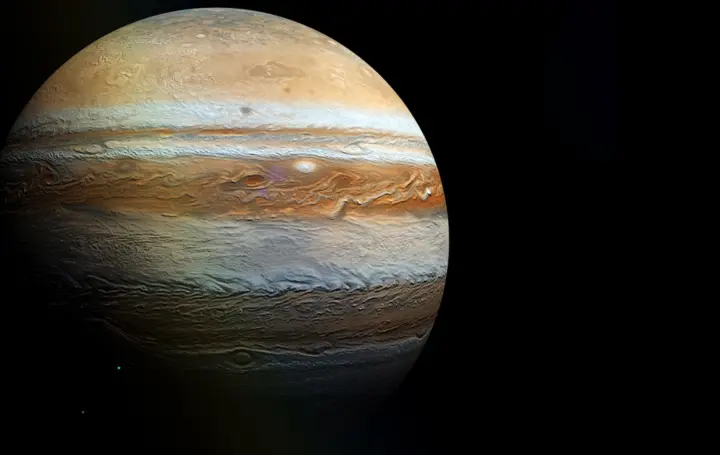
The moons of Galilee themselves are wonderful worlds. Io is the most volcanically active body in the solar system, and Europe's icy surface may hide an ocean beneath the surface that could harbor life, Ganymede is the largest moon in the solar system and has its own magnetic field, and the crater surface of Callisto tells the story of the solar system's early history. Each moon offers unique opportunities for discovery and the possibility of extraterrestrial life.
The future of Jovian's exploration is set to be exciting and transformative. NASA's Juno mission, which has been studying Jupiter since 2016, has been extended until September 2025. This extension will allow Juno to explore not only Jupiter itself but also its rings and moons, with a planned confluence with three of Jupiter's most interesting Galilean moons: Ganymede. and Europe and Io.
In addition to Juno, the Europa Clipper mission is scheduled to launch in the near future, with the aim of reaching Europe by 2030. The mission will analyze Jupiter's moon in unprecedented detail, with the aim of understanding Europe's complex geology and composition. Scientists are particularly excited about the possibility of creating conditions for life beneath Europe's ice crust, in its subsurface surroundings.
These missions, along with the European Space Agency's JUICE Ice Moon Explorer, will contribute significantly to our understanding of the Jupiter system. It will provide insights into the habitability of ocean worlds and possibly discover signs of life, expanding our knowledge of the possibility of extraterrestrial life.
In conclusion, the exploration of Jupiter revealed a world of extremes, from its stormy atmosphere to its mysterious heart and the dynamic environments of its moons. These discoveries not only enhance our understanding of Jupiter, but also provide insight into the formation and evolution of the solar system as a whole. As we continue to explore this giant planet, we can expect more of its secrets to be revealed, further expanding our knowledge of the universe we live in.
![]()
Hospice of the King's Assistant... Masterpieces of art and color harmony in Kermanshah
The King’s Assistant Hospice in Kermanshah, a Qajar-era gem, shines with vivid tiles and graceful arches. Built for religious ceremonies and tribal reconciliation, it also holds tales of conflict, peace, and deep-rooted Persian hospitality. Today, it stands as a museum and a beautiful reminder of cultural and spiritual legacy. more- ADVERTISEMENT
![]()
Things people with emotional intelligence never do
Emotional intelligence helps people understand and manage emotions, leading to better relationships, improved teamwork, and stronger mental health. It can be developed through self-reflection, mindfulness, and active listening. Emotionally intelligent people avoid impulsive actions and build balanced lives with better decision-making and communication. more- ADVERTISEMENT
![]()
My strategies for developing business confidence
Asking for a raise taught me a powerful lesson: confidence and self-advocacy matter. Despite battling impostor syndrome and anxiety, I learned to challenge my inner critic, celebrate my wins, and take risks. That one bold step led to growth, success, and a stronger belief in myself ever since. more- ADVERTISEMENT
![]()
Life lessons that I realized after the age of forty and wished I had learned them at twenty: Is it too late to arrange your life in the forties?
Life Lessons I Realized After I Turned 40 That I Wish I Learned at 20- Is it Too Late to Get Your Life Together in Your 40s more- ADVERTISEMENT
![]()
The solar system had nine planets. Maybe he's still doing it? Here's the latest space news today
Pluto’s “demotion” in 2006 marked the start of an exciting new chapter in space discovery, revealing a growing family of dwarf planets and pointing toward a possible mysterious ninth planet. With powerful tools like the James Webb Telescope, we’re closer than ever to uncovering strange new worlds—even beyond our solar system. more- ADVERTISEMENT
![]()
The history of the city of Samarra ... Iraq's Hidden Gem
Samarra, once a grand Abbasid capital, still stands with its iconic spiral minaret and rich Shia heritage. Though chosen as the capital of Islamic civilization in 2020, the city remains dusty and neglected, holding untold stories within its historic ruins. more- ADVERTISEMENT
![]()
The Mamluks in the Arab World: History - Importance - Leaders and Decline
The Mamluks, once slave soldiers, rose to rule Egypt and Syria from 1250 to 1517. They defeated Crusaders and Mongols, revived the caliphate, and built stunning architecture in Cairo. Though conquered by the Ottomans, they remained influential, even challenging Napoleon before their final defeat in 1811. more- ADVERTISEMENT
![]()
5 things you should remember when you don't believe in yourself
5 Things to Remember When You Don’t Believe in Yourself more- ADVERTISEMENT
![]()
The real signs of a very intelligent person
True Signs of a Highly Intelligent Person more- ADVERTISEMENT
![]()
How to create a small online store for online sales?
Starting an online store is a smart move to sell your products and reach more people. Begin small, focus on unique items, choose a catchy store name, and use easy platforms like Shopify or Wix. Good design, secure payments, solid marketing, and great service are key to your store’s success. more- ADVERTISEMENT
















